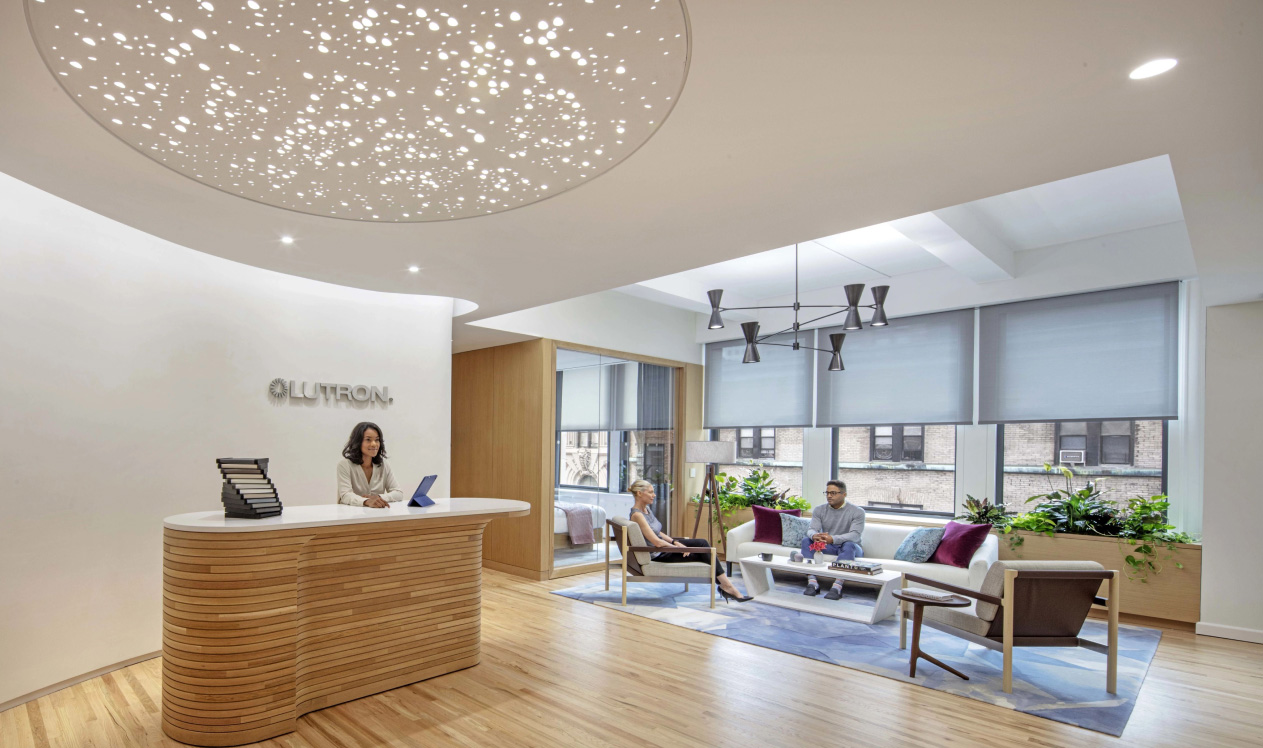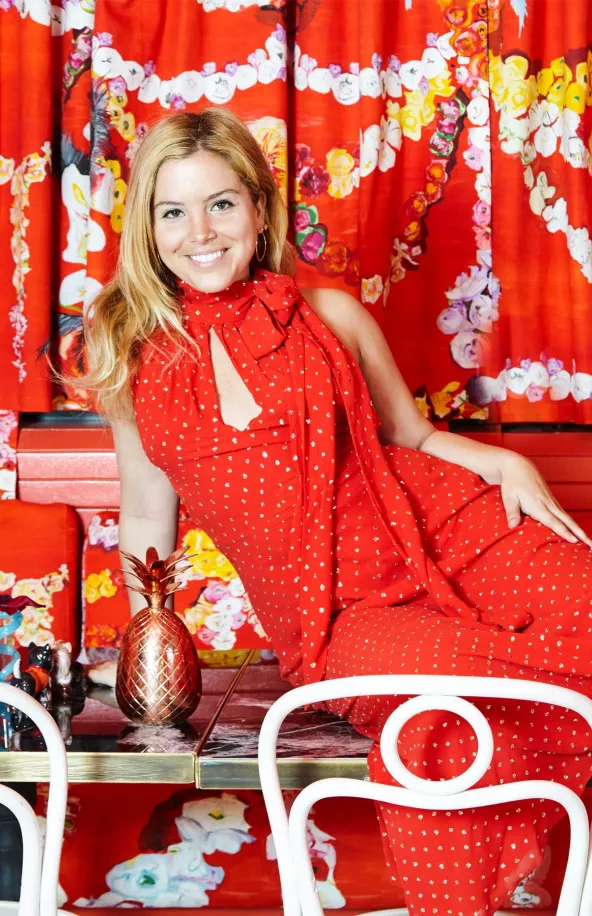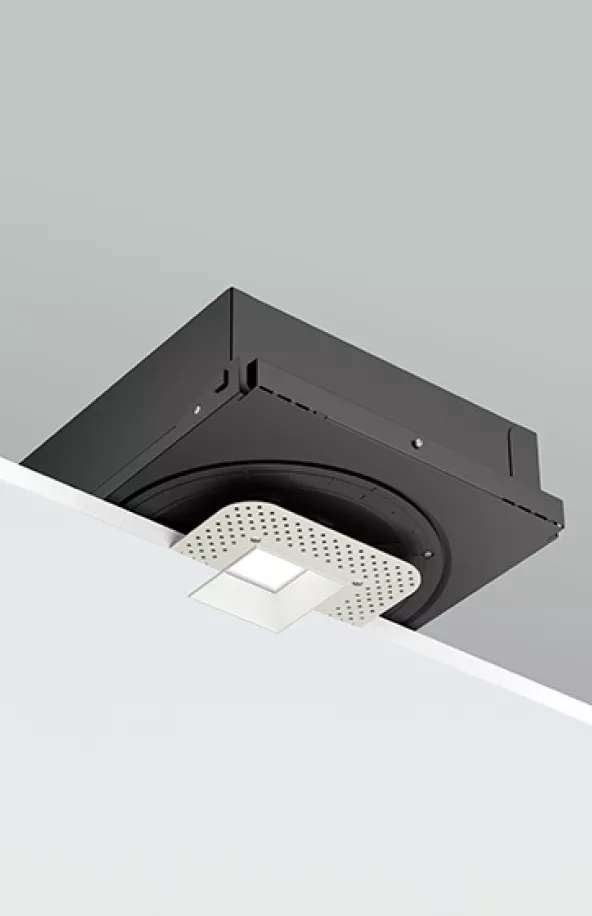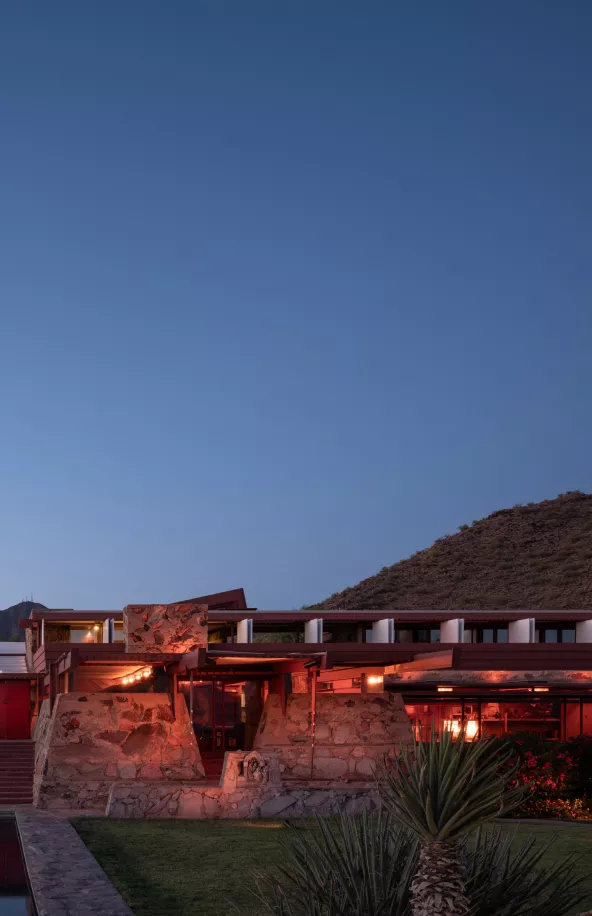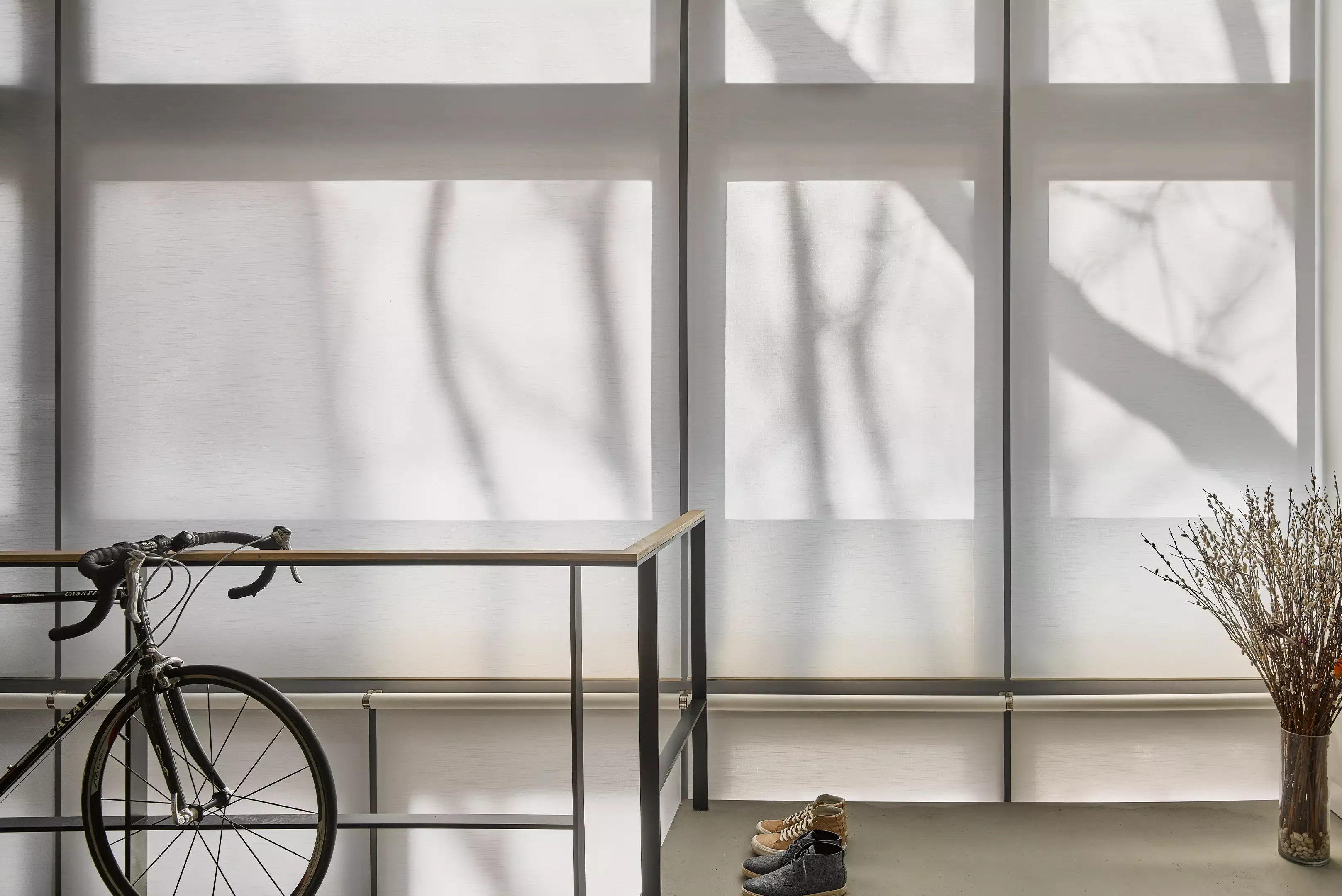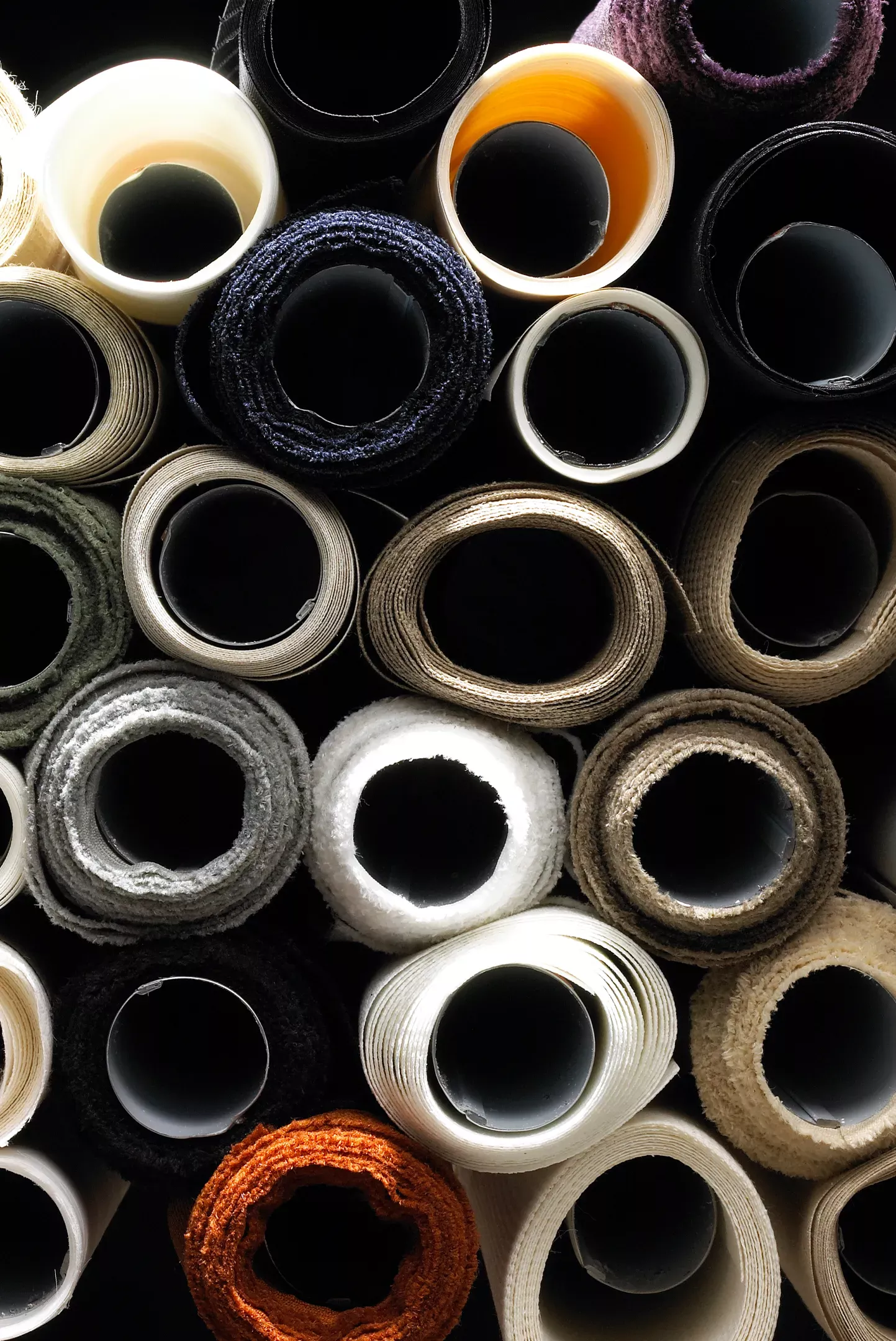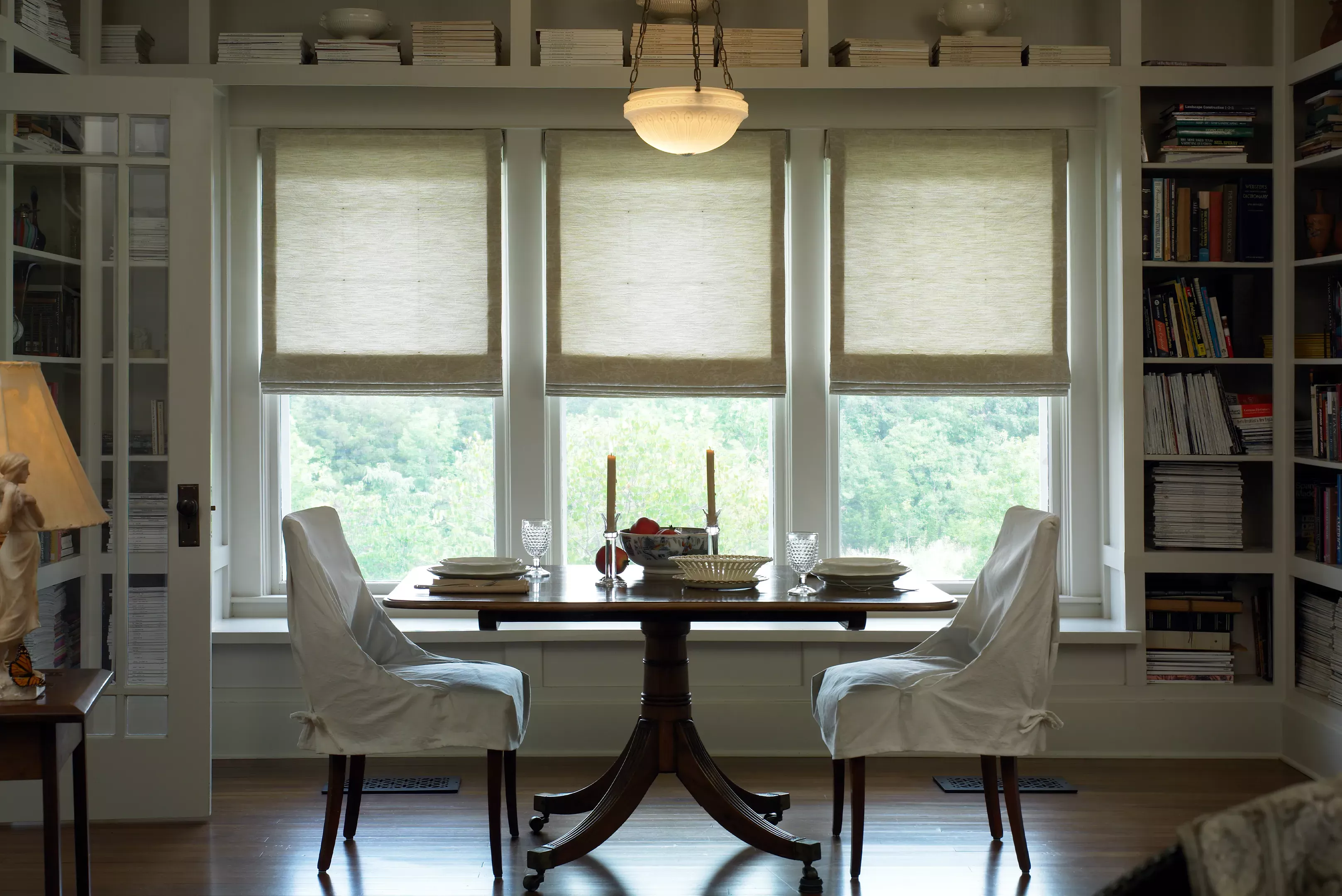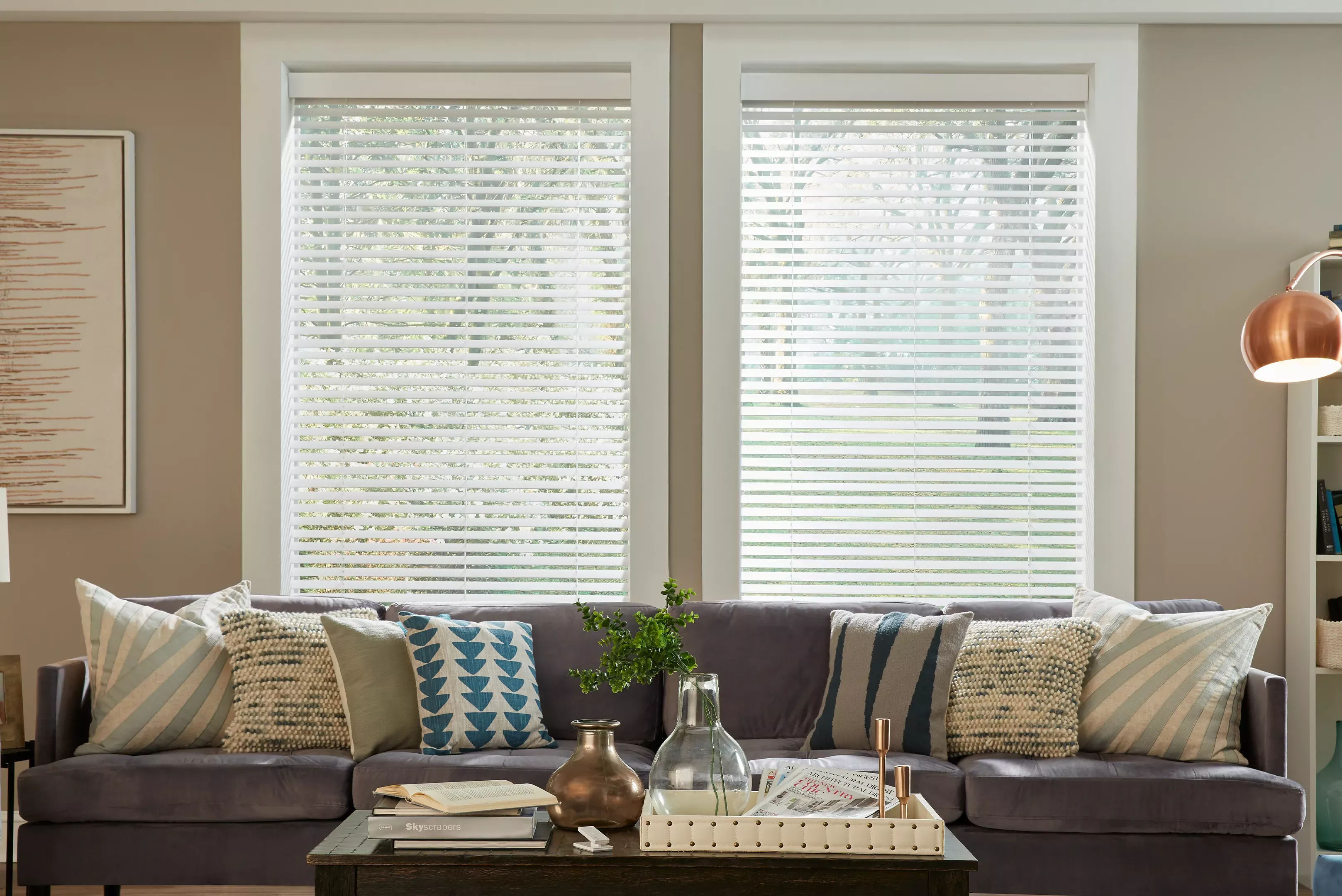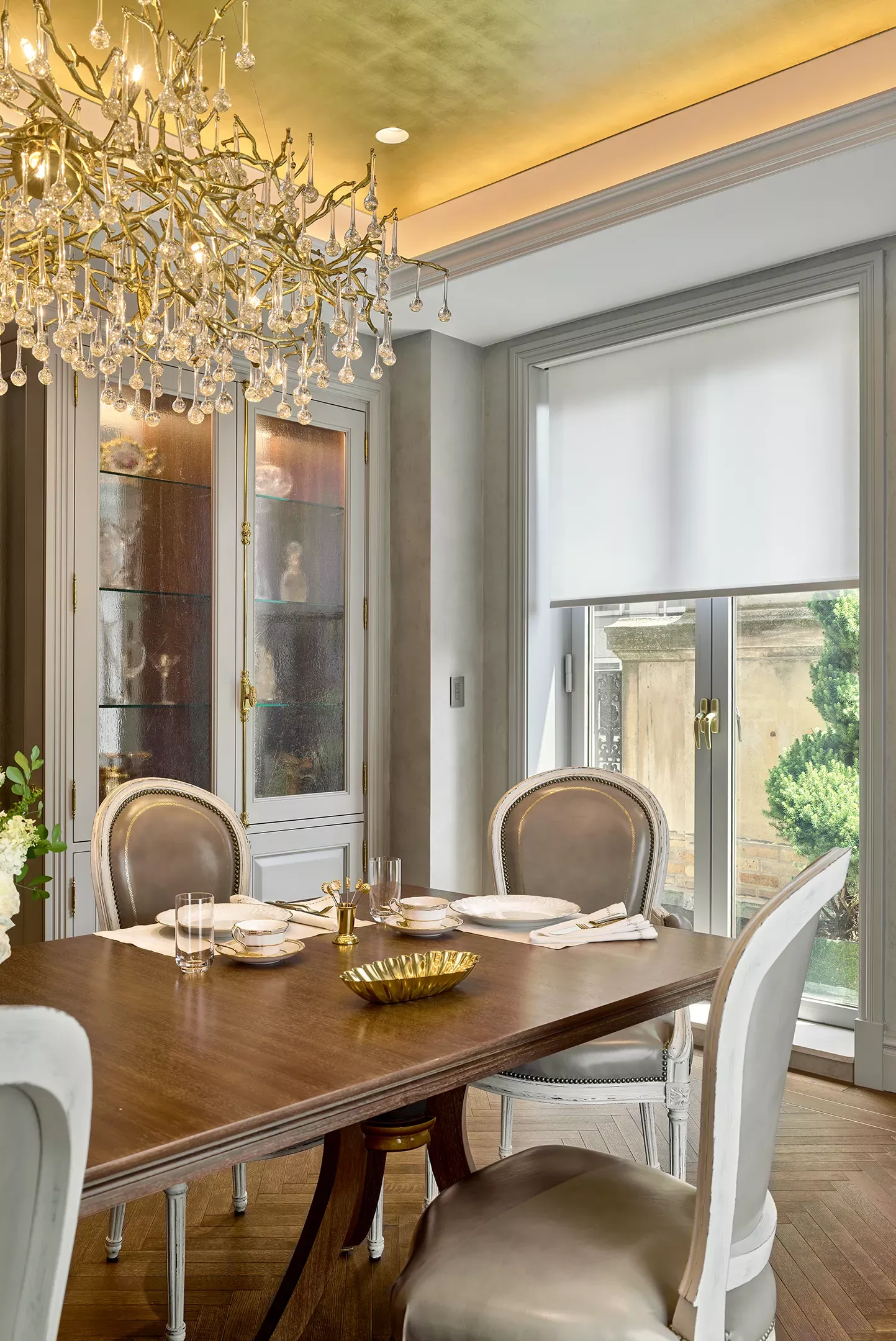Types of Window Shades & How to Use Them in Your Home
March 31, 2023
The foundation of interior illumination is natural light. Connection to natural light improves our sense of well-being—and a room reveals its depth of color and textural richness when illuminated by daylight. Accordingly, an important part of lighting design is the management of natural light and its integration into home lighting systems.
Author
Lutron
Date
03.31.23
Read
15 minutes
15 Min
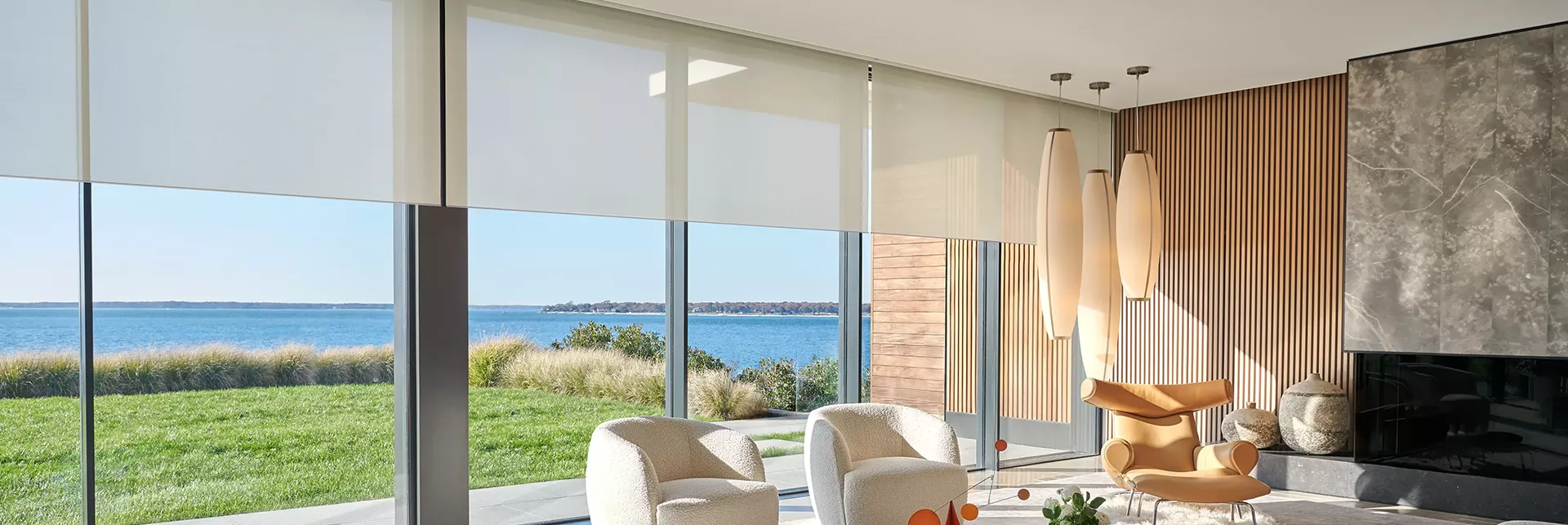
Interior designers and architects can incorporate different kinds of window shades to diffuse or reduce light in a space, depending on the needs of the space and where the light will enter it, among other factors.
Evolving technology now offers clients automated solutions, including shades that can be adjusted with the touch of a button or a voice command. “An automated shade is like a dimmer for the sun,” explains Todd Goldblatt, Lutron Experience Center Leader. “We can use automation to better utilize daylight in our interiors, which is the most dynamic, powerful source of light we can have in a space.”
Companies like Lutron lead the way with design tools that provide clients with state-of-the-art, precision-controlled window shades and systems. Here, we provide a walkthrough for specifying various window shade types and explain how they can integrate into a home automation system.
“We can use automation to better utilize daylight in our interiors, which is the most dynamic, powerful source of light we can have in a space.”
Todd Goldblatt
Lutron Experience Center Leader
What to Consider When Choosing Window Shades
Interior designers look for window treatments that marry functionality and aesthetics. That’s why it’s important to consider the way that the client will use a space, the shape of a window and its orientation, and the added accessibility and convenience of integrated automation.

Purpose of the Shade
Window shades do much more than just filter and reduce light. They can also:
- Provide privacy
- Minimize glare
- Reduce UV absorption
- Add texture and contrast
- Regulate interior temperatures
- Improve connections with outdoor surroundings
Before specifying shades, designers should talk with clients about the ways their spaces are used and the specific features that are important to them. Note each window’s exposure, the home’s environment, and the way each space is used—a loft apartment will have different shading needs than a home in the woods. Windows with eastern and western exposure receive more direct light, so these may have greater UV light blocking and heat reduction needs, while windows with northern or southern exposure may need shades that provide privacy but let more light in. An east-facing bedroom window that gets full-on sun in the morning may have greater need for light-filtering shades, just as a west-facing dining room may need UV blocking for the intense sun in the afternoon. Shades can also be used to retain heat and light during cold months, and diffuse light and prevent heat absorption in warmer months.
For example, a home office with large windows might require privacy, UV light blocking, and glare reduction. Designers can specify shades that allow users to comfortably see their computer screens without sacrificing a connection with the outdoors. Lutron offers window shade products that attend to these functional requirements as they elevate the aesthetics of interior spaces.
Window Shape
First, consider a window's shape. Irregularly shaped windows, such trapezoidal windows or a curved wall of windows, present unique challenges for shading. For standard double-hung windows, which are common in all styles of houses, any type of shade can be compatible. However, for hinged windows like awnings, it’s important to consider what shades will accommodate how the windows open. Some window treatments are impractical for certain kinds of windows, like wood blinds on a curved window or manual shades on hard-to-reach windows/ Roman shades on a slanted window. However, shades can be tailored to fit unique and irregularly shaped windows, including curvilinear clerestory windows and other arched windows. Lutron’s service providers offer shades that can be customized to fit even irregular spaces.
Color and openness
Specifiers should also think about fabric performance properties such as color and openness, which play important roles in light transmission, glare reduction, and visibility. Openness is a measurement of the tightness of a fabric’s weave, which corresponds to its ability to filter in light. Solar shades can be woven precisely to let more or less light into a space. The more light comes through a fabric, the less privacy users have—and the greater the connection with the surroundings. The tighter the weave, the less light comes through, proffering greater privacy, less visibility, and more light reflected away, keeping the space cooler.
“Color has an enormous and counterintuitive impact on a shade’s general performance,” explains Goldblatt. There’s a common—and true—perception that darker fabrics mean greater heat gain. But in fact, they have lower visual light transmission (Tv), which means they reduce glare and improve connection to surroundings. A living room with a skyline view that gets intense sun during the afternoon might be a candidate for a dark shade, which would allow residents to enjoy their view without the glare or UV absorption. However, the darker the fabric, the more light will be absorbed, the hotter the fabric will get, and the less the shade will mitigate thermal buildup from the sun on the interior.
Lighter colors are advantageous in indirect light environments with less need for glare reduction. They reflect more solar radiation, preserving indoor temperatures while reducing visibility. Designers can also choose dual-sided fabrics, which have one color on the exterior and another on the interior, to meet all of their clients’ needs. “If your objective is to have both incredible light reflectivity to keep the space cool, and an incredible connection to your outdoor surroundings, ideally you'd choose a white exterior and a dark gray interior. Several fabrics in Lutron’s collection can do that, including many twills, such as Basketweave 27 and T screen.”

Light-colored fabrics reflect solar radiation to keep the interior cool in direct sunlight.
Accessibility & Automation Integrations
A study conducted by the US Department of Energy found that 75% of manual residential window coverings remain in the same position every day. Participants reported initially moving them to meet a privacy need or to reduce glare, and then rarely adjusting them. “People just do not move their shades unless they’re automated,” explains Goldblatt. Why? “I think we've all probably tried to control a Venetian blind or a mini blind with those string mechanisms, which are a pain, and also a child hazard,” he continues. But when people don’t adjust their shades, they don’t get the benefits of daylight management.
Automation allows people to create the right amount of light for any activity, synchronize with daylight cycles, anticipate needs for glare reduction and privacy, and integrate all of this into a single push-button process. Designers can talk to their clients about the ways that they use their spaces so that they understand the full benefits of automation.
The more complex the shade and the more inaccessible the window, the greater the benefit from automation. Homes with angled or skylight windows, many windows, or windows with multiple shades, can improve accessibility by incorporating automation. “There might be a solar shade, a roller, and then drapery on the outside, with layered textures and colors,” explains Goldblatt. “Every time you add another layer, you're multiplying the benefits of automation.”
Shades can be set to move on schedules, depending on the day of the week or time of year to create a seamless connection with the outdoors and make the most of daylight. For example, blackout shades in a bedroom can be set to raise 10% when a person wants to wake up. This would allow them to rise gradually without being jolted awake by the full harshness of the morning sun. Or a family may want shades up during the day to enjoy a connection with the outdoors, but down for privacy at dinner. They can also be set based on residents’ geolocation, keeping shades raised when they are home and lowered when they leave to avoid unnecessary UV damage to furniture.
Benefits:
- Simple to operate
- Allow for privacy with filtered light penetration
- Easy to clean
Best for…
Because roller shades are so understated, they’re appropriate for most rooms, and most house styles. Cordless lift and motorized roller shades are child- and pet-safe, and continuous cord loop shades are ideal for larger windows, as they provide support for heavier blinds. Rollers are also great for layering, either with another roller, like a sheer fabric paired with either a blackout roller or drapes. It’s important to note that a standard roller has a gap between the edge of the shade and where the bracket mounts. This means that even with blackout fabrics there’s light leakage. Some rollers, such as Lutron’s exposed Palladiom shading system, shrink the gap significantly, but designers should keep in mind that rollers only provide total blackout when integrated with side channels.
Benefits:
- Affordable
- Classic, versatile design in a range of fabric options
- Full light and temperature control
Best for…
Roman shades are more affordable than traditional drapes and can add a luxurious element to a room. Romans can be used in any room and any style of house. For blackout applications, they have a much smaller light gap than rollers. Whereas rollers can only provide full blackout when a side channel is installed, Romans have near blackout performance without added design or construction work.
When specifying Lutron Roman Shades, interior designers can choose from the client’s own material (COM). Like other styles of Lutron shades, their Romans also feature Lutron Intelligent Hembar Alignment that synchronize all window coverings throughout a room or home.
Benefits:
- A timeless material that exudes warmth and connection to nature
- Wood blinds effectively block UV rays and reduce solar heat gain
- Easy to clean and low-maintenance
Best for…
Wood blinds are ideal for living rooms, dens, and great rooms. Faux wood is recommended for rooms with high humidity levels such as bathrooms or kitchens, as it resists moisture and cracking. They can be painted or stained to complement a room’s decor. Lutron’s Wood Blinds with Independent Control of Lift and Tilt are automated for precise positioning and intelligent tilt alignment.
Lutron offers Sivoia QS Triathlon architectural honeycomb shades featuring powerful automation technology that allows clients to adjust their shades with the touch of a button.
Benefits:
- Air-trapping shape provides exceptional energy savings
- Easy to clean
- Feature a thin profile that folds into a neat stack when opened
Best for…
Honeycomb shades are appropriate for any room in the house. In blackout fabrics, they’re excellent bedroom shades, darkening the room without having to create a side channel or address light gaps. Honeycombs also provide excellent thermal efficiency—particularly for spaces that get direct sunlight in the summer or cold environments. Lutron’s insulated honeycomb shades have a white backing that reflects light to keep interiors cool and comfortable. These dual-sided fabrics give each room a distinct look while maintaining a uniform appearance from the outside. Lutron offers fabric options to suit a variety of aesthetic and functional needs with their two cellular lines: The Architectural Honeycomb Collection and the Honeycomb Essentials Collection.
Horizontal Sheer Blinds
Horizontal sheer blinds pair the elegance of a sheer fabric with a blind’s precision. Their outer layers diffuse views into a home’s interior, softening the light even when the vanes are open. When fully lowered, Lutron Horizontal Sheer Blinds can also tilt and align perfectly with blinds on adjacent windows. These Lutron blinds are available in light filtering or room-darkening versions, with two slat heights. Users can also set controls for Lutron’s horizontal sheer blinds via Lutron’s seeTouch keypad, integrated with RadioRA 3 or HomeWorks systems by Lutron.

Benefits:
- Filter sunlight while maintaining an outside view
- Available in numerous fabrics
- Easy to operate and clean
Best for…
Horizontal sheer blinds work best in spaces like living or dining rooms for light filtration that also allows privacy, for a soft, modern look. They’re also great for dressing rooms and walk-in closets, spaces that require privacy but benefit from letting in as much natural light as possible. However, their sheer fabric is not ideal for high-humidity rooms such as bathrooms or kitchens.

Tensioned Shades
Finding the right treatment for skylights and angled windows can be challenging. Tensioned shades were designed to address this need. Lutron’s tensioned shades are taut fabric panels that align with windows without sagging, while also reducing light leaks around the fabric. Lutron tensioned shades can be installed with inside, recessed inside, and surface (for skylights) mounts. By using Lutron’s Sivoia QS Tension Roller 100, users can adjust the view out their window using a remote instead of a ladder.
Benefits:
- Reduce solar gain and heat, and protect furniture from UV rays
- Concealed cable guides maximize view when open
- Efficient, motorized mechanism with one-touch control through a keypad or remote
Best for…
Tensioned shades are ideal for rooms with a skylight or angled windows. They’re also used for ground-level urban environments where residents install bottom-up shades for privacy. Available in five neutral colors, in sheer or blackout, Lutron’s Performance Collection and Classico Collection of tensioned shades can coordinate with a home’s decor or fade into the background. Automation is particularly important for windows that present accessibility challenges. By linking their motorization to the home’s HVAC system, tensioned shades can be automated to open or close as needed based on the room’s temperature.

Tension shades bring UV protection and glare reduction to skylights and angled windows.
Order Shades from Your Local Authorized Lutron Dealer
As a manufacturer of shading fabrics and control systems, Lutron offers complete solutions that provide precise control of daylight, using innovative technology that integrates seamlessly with lighting systems. These systems make spaces more comfortable and energy-efficient, giving clients the ability to easily personalize their environment at the touch of a button. With over 20 years of experience and forward thinking, Lutron has refined their fabrics and controls to look and work beautifully.
Find your local authorized Lutron dealer. Or visit Lutron’s Shade Selector to search products and sort by type, color, pattern, and features.
Get design support.
Consult with a Lutron residential specification specialist today and learn how Lutron can help you craft elevated experiences with light on your next project.
